To say the automotive industry is currently experiencing big changes, is like saying it gets quite cold on the Canadian Prairies in the winter. It’s a truth that doesn’t need an explanation, because you can feel it.
The number of electrified or partially electrified models from legacy automakers is growing rapidly, to say nothing of upstarts that sell only electric vehicles such as Lucid, Rivian and, the global leader in EV sales, Tesla.

For manufacturers that are transitioning from internal combustion to electric, the challenges are many. High development costs, shifting consumer demand, and changing government regulations, among them. While virtually all are committed to having fully electric fleets in the coming decades, the timeframes for when that will happen vary. Widely.
Since the first Prius hybrid went on sale in Japan in 1997, Toyota has sold more than 20 million cars worldwide that have some form of electrification.
Honda Motor said earlier this year it plans to be all electric by 2040. Nissan said last year, it will be EV only in Europe by 2030. Same for Ford.
General Motors declared in 2021 that it would be fully electric by 2035 but said earlier this year that it would introduce plug-in hybrid models during the transition from gas-powered vehicles to electric due, in part, to weakened demand for EVs. GM sold the Chevy Volt sedan plug-in from 2010 to 2019.
Taking a More Wholistic Approach

Then there’s Toyota. The world’s largest automaker, which sold more than 11 million vehicles worldwide in 2023, has also said it has big plans to reduce carbon dioxide (Co2) emissions – which result from the burning of fossil fuels with internal combustion engines – but it’s using a different strategy.
Rather than just committing to be EV-only like its rivals, Toyota is pursuing a wholistic approach. The Toyota Environmental Challenge 2050, launched in 2015, has six categories that include zero emissions from its manufacturing operations, minimizing and optimizing water usage, and zero emissions life cycles for its vehicles. And yes, one of the six items is zero emissions from new vehicles.
Toyota’s aim for 90% emissions reduction by 2025
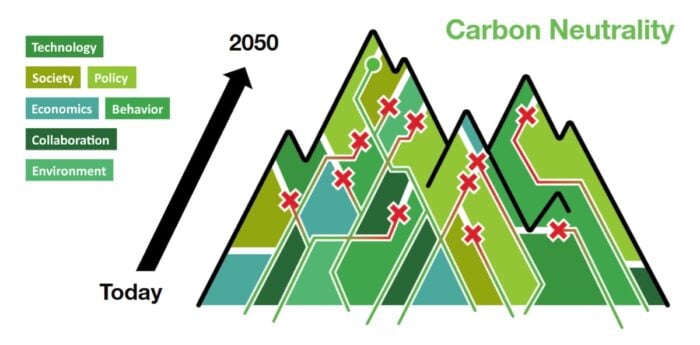
All these efforts aim to make Toyota a carbon neutral carmaker by 2050. But how it plans to get there is interesting. For instance, Toyota aims for a 90 percent Co2 emission reduction by 2050 versus 2010. To do this, the company says it will introduce more “eco-friendly” cars that fall into four main categories:
- Conventional hybrids (gas-electric)
- Plug-in hybrids (gas-electric)
- Fuel-cell (hydrogen-powered)
- Pure electrics
Gas-only vehicles are part of the mix, too, but will be gradually phased out over time.
Putting Toyota’s Electrified Models to the Test

Toyota has a long history of building and selling electrified vehicles. Since the first Prius hybrid went on sale in Japan in 1997, Toyota has sold more than 20 million cars worldwide that have some form of electrification. Currently, the company sells 19 electrified models in the United States and Canada. The bulk of these are conventional gas-electric hybrids (15), but Toyota also sells the bZ4X EV crossover, and the hydrogen fuel cell-powered Mirai sedan.
The company’s luxury brand, Lexus, has a wide array of electrified models, with 11 available in the U.S., and 10 in Canada. Among these are the RZ EV crossover, and the NX and RX plug-in hybrid SUVs.
Cross-country road trip celebrating 60 years in Canada
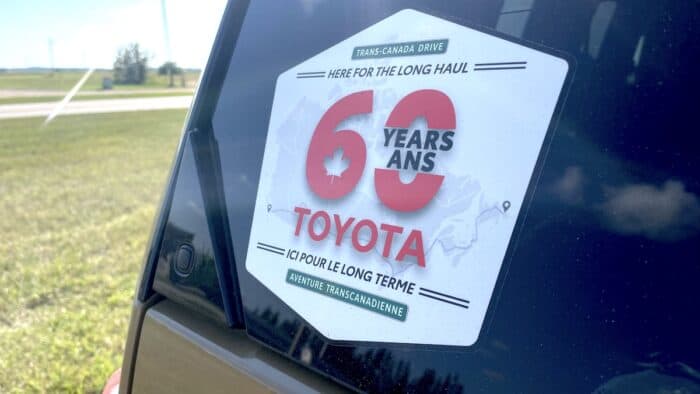
I have driven most of Toyota’s electrified models at least once, but recently had some extended seat time in four new Toyotas, all of which are gas-electric hybrids. And it happened at Toyota’s invitation.
To celebrate its 60th anniversary in Canada, Toyota put together a cross-country road-trip, that began east in St. John’s, Newfoundland, and ended three weeks later in the west in Victoria, British Columbia.

The 5,592-mile (9,000 km) trip, which covered all 10 Canadian provinces, was divided into six legs, and enabled invited journalists to sample a selection of Toyota models over multiple days. Most of the cars used were hybrids, but the Mirai, bZ4X, and Prius Prime plug-in, were also included.
My leg, wave five, went from Winnipeg, Manitoba, to Calgary, Alberta, was roughly 994 miles (1,600 km), which included three days of driving. I covered three provinces, Manitoba, Saskatchewan, and Alberta, with overnighting in four cities: Winnipeg, Saskatoon, Edmonton, and Calgary.
Thankfully, I was paired with another journalist to share driving duties!
We drove the following, in order:
2025 Toyota Camry Hybrid XSE AWD
2024 Toyota Landcruiser First Edition
2025 Toyota Crown Signia Limited
2024 Toyota Tacoma i-FORCE MAX TRD PRO
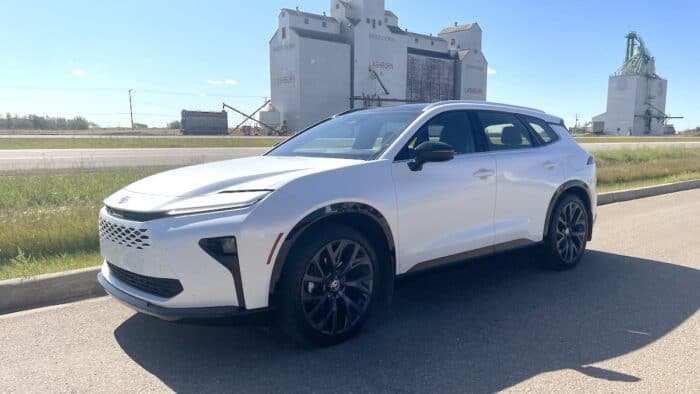
In addition to gathering some driving impressions and visiting several interesting places along the way while taking loads of photos, our journey also served to highlight the hybrid powertrains in each vehicle.

The Camry, which is all-new for 2025, is only available in the U.S. and Canada with a hybrid powertrain. I wrote a separate 2025 Camry Hybrid review and came away impressed, especially with an average of 42 mpg (5.6 L/100 km) while driving it across the wide-open prairies.
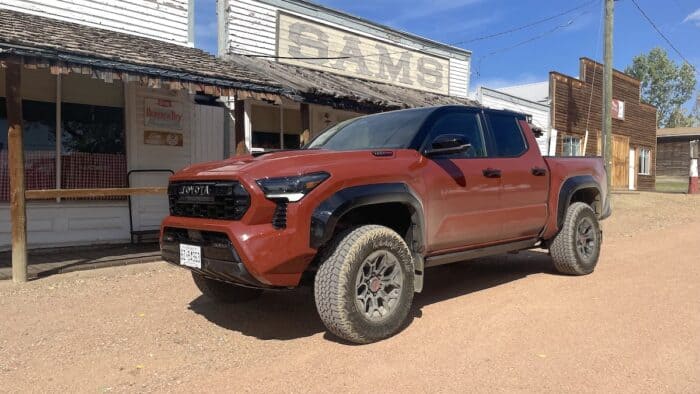
Other driving highlights include driving the Tacoma i-FORCE MAX TRD PRO on gravel roads outside Edmonton on day two. Our test truck handled the loose surfaces with ease, and delivered very secure handling, especially in 4HI 4WD. I wrote about the gas Tacoma for Tractionlife last fall, but this was my first time in the hybrid.

I also enjoyed my time in the Landcruiser and Crown Signia, both of which I drove for the first time. Both are all new and even though they were pre-production units, they handled the many miles we put on them with confidence. The Landcruiser is a real head-turner in any color, but especially in Trail Dust yellow.
Toyota’s Strategic Partnerships Towards Sustainability
Hydrogen Fuel Cell Electric Vehicles at Edmonton International Airport
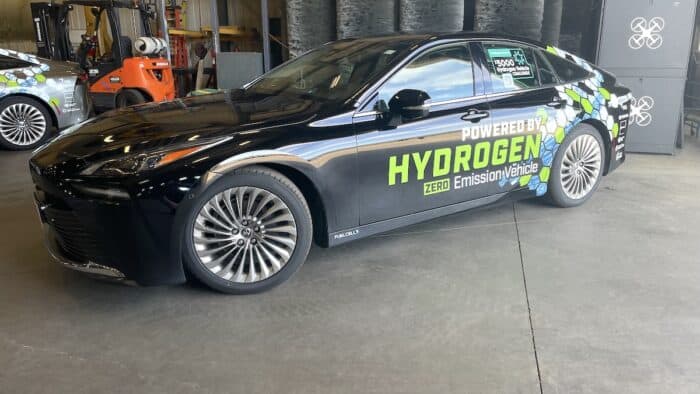
One of our more interesting stops was Edmonton International Airport, which has a hydrogen storage container which it uses to fuel its fleet of seven Mirai sedans. The airport switched to the Mirais, which are used to shuttle airport staff for activities on and off-site, about 18 months ago to reduce its carbon emissions. The airport also has plans to convert one of its massive snow-clearing machines to a hybrid diesel-hydrogen vehicle.
Toyota’s partnership with Edmonton Airport mirrors sustainable projects the company has in the U.S.
Old coal mining site in Kentucky converted to produce clean, renewable solar energy

For example, last year Toyota agreed to purchase 100-megawatts of electricity generated by a new solar project that’s located on the site of a former coal mine in eastern Kentucky. Toyota says the agreement will help the company achieve its goal of having 45 percent or more of its purchased electricity come from renewable sources by 2025. Toyota has large manufacturing operations in Kentucky, including an assembly plant that builds the Toyota Camry and RAV4, along with the Lexus ES.
Partnering with FuelCell Energy Inc. for the World’s First ‘Tri-gen’ Production System at the Port of Long Beach
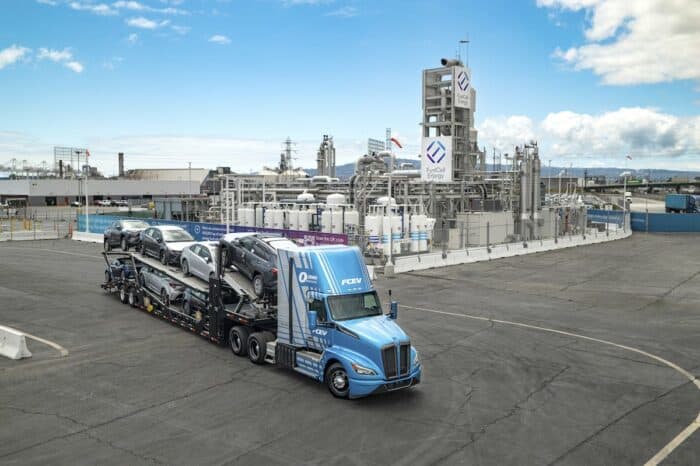
Toyota has also partnered with FuelCell Energy Inc. to open a “tri-gen” generating system at its Toyota Logistics Services (TLS) vehicle processing and distribution center, which is located at the Port of Long Beach, California. With Tri-gen, biogas is used to generate renewable electricity and hydrogen, along with useable water. The Long Beach facility, which processes about 200,000 Toyota and Lexus vehicles per year, is the first of its kind within Toyota that’s powered completely by on-site generated renewable electricity.
Toyota Alabama solar project for its engine plant
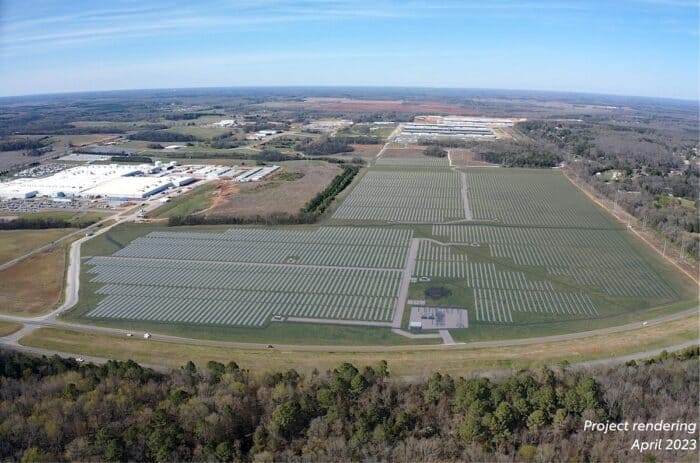
Toyota is pursuing other sustainable projects on both sides of the border, including the use of solar energy to provide renewable electricity for its Alabama engine plant, and the installation a roof-top solar system that powers its Eastern Canada Parts Distribution Center.
While the road to carbon neutrality by 2050 is a long one, Toyota’s wholistic approach lays out a sustainability path that is ambitious, but also achievable.


